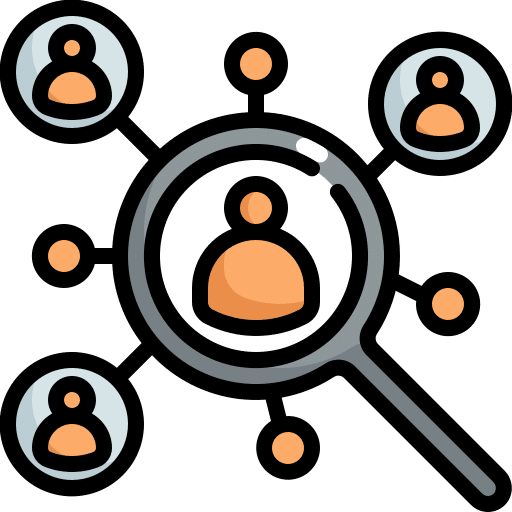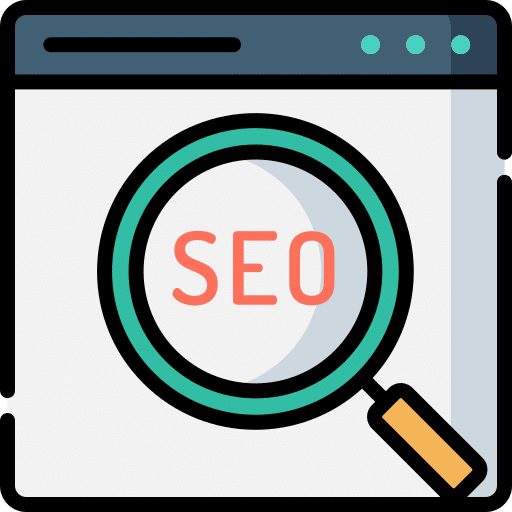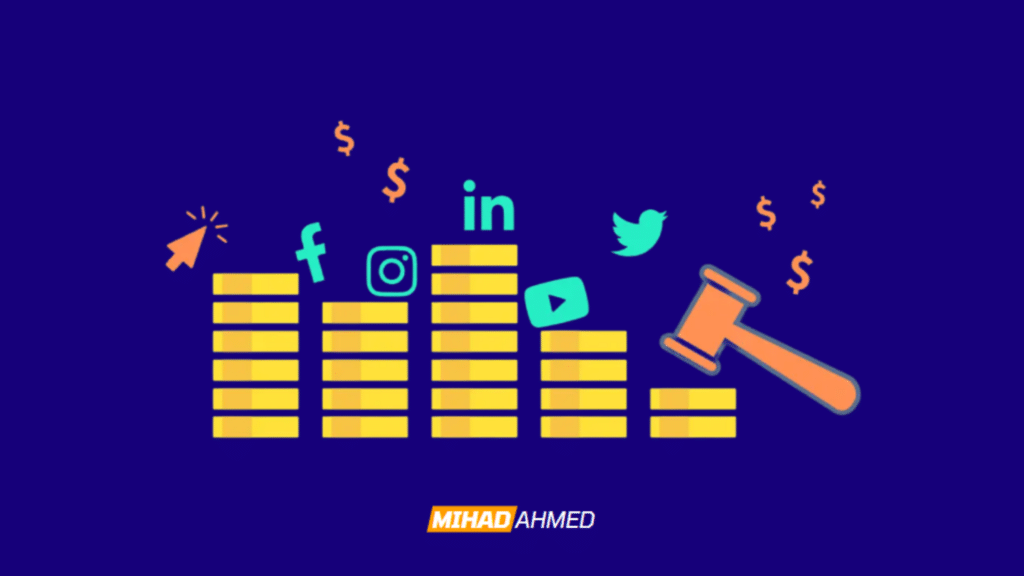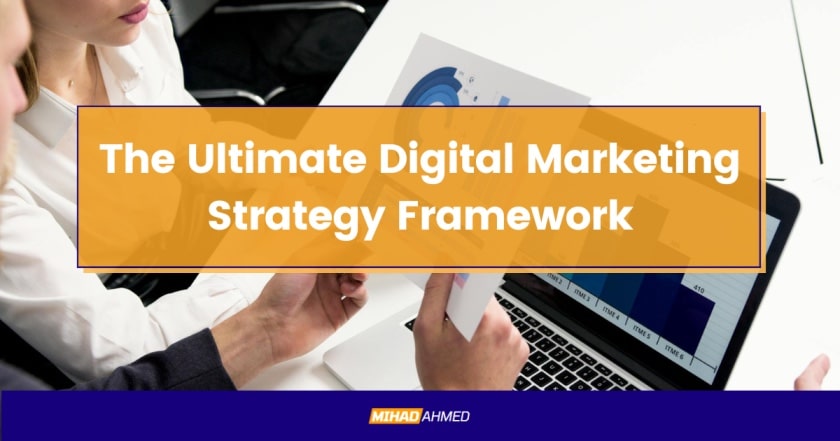The Ultimate Digital Marketing Strategy Framework: A Complete Guide for Success
In the ever-evolving digital landscape, having a robust digital marketing strategy framework is essential for any business aiming to thrive online.
A digital marketing framework is a comprehensive plan that outlines how a business will achieve its marketing goals using online channels such as search engines, social media, email, and websites.
This framework is crucial because it ensures that all digital marketing efforts are aligned, cohesive, and geared toward achieving specific business objectives.
Understanding Your Audience

Market Research
The foundation of any effective digital marketing strategy lies in understanding your audience. Market research helps you gather valuable insights about your target market’s needs, preferences, and behavior. By analyzing data from surveys, focus groups, and customer feedback, you can identify trends and patterns that will inform your strategy.
Creating Buyer Personas
Once you have a good grasp of your audience, the next step is to create detailed buyer personas. These are fictional representations of your ideal customers based on real data and market research.
Each persona should include demographic information, interests, pain points, and purchasing behavior. This helps in tailoring your marketing messages to resonate with different segments of your audience.
Audience Segmentation
Segmenting your audience is crucial for delivering personalized and relevant content. By dividing your audience into smaller groups based on specific criteria such as age, location, or buying behavior, you can create targeted campaigns that are more likely to convert.This article offers free shipping on qualified Face mask products, or buy online and pick up in store today at Medical Department
Setting Clear Objectives

SMART Goals
Setting clear, actionable objectives is a key component of a successful digital marketing strategy. SMART goals—Specific, Measurable, Achievable, Relevant, and Time-bound—provide a clear roadmap for what you want to achieve and how you will measure success.
Short-term vs. Long-term Objectives
It’s important to balance short-term and long-term objectives. Short-term goals, such as increasing website traffic or generating leads, help to keep the momentum going, while long-term goals, like building brand loyalty or expanding market reach, ensure sustained growth.
Competitor Analysis

Identifying Competitors
To stay ahead in the digital game, you need to know who your competitors are and what they are doing. Identifying your competitors involves looking at both direct and indirect competitors in your industry.
SWOT Analysis
Conducting a SWOT analysis (Strengths, Weaknesses, Opportunities, Threats) of your competitors helps you understand their strengths and weaknesses compared to your own. This analysis can reveal opportunities for differentiation and areas where you can improve.
Benchmarking
Benchmarking involves comparing your performance metrics with those of your competitors. This helps you identify areas where you excel and areas where you need to improve.
Choosing the Right Digital Marketing Channels

Owned Media
Owned media refers to digital assets that you control, such as your website, blog, and social media profiles. These channels are essential for building your brand and engaging with your audience.
Paid Media
Paid media includes advertising efforts such as pay-per-click (PPC) ads, social media ads, and display advertising. These channels can drive immediate traffic and visibility to your website.
Earned Media
Earned media refers to publicity gained through word-of-mouth, customer reviews, and media coverage. This type of media is often seen as more credible and can significantly boost your brand’s reputation.
Content Marketing Strategy
Importance of Content
Content is king in the digital marketing world. High-quality, relevant content attracts and engages your audience, driving traffic and conversions.
Content Types
There are various types of content you can create, including blog posts, videos, infographics, ebooks, and podcasts. Diversifying your content helps to reach different segments of your audience.
Content Calendar
A content calendar helps you plan and organize your content creation efforts. It ensures that you consistently produce and publish content that aligns with your marketing goals and resonates with your audience.
Search Engine Optimization (SEO)

On-page SEO
On-page SEO involves optimizing individual web pages to rank higher in search engine results. This includes using relevant keywords, optimizing meta tags, and ensuring your content is high-quality and engaging.
Off-page SEO
Off-page SEO focuses on building your website’s authority through backlinks from reputable sites. This involves link-building strategies, social media marketing, and influencer outreach.
Technical SEO
Technical SEO ensures that your website meets the technical requirements of search engines. This includes optimizing site speed, mobile-friendliness, and having a clear site structure.
Social Media Marketing

Platform Selection
Choosing the right social media platforms is crucial for reaching your target audience. Each platform has its own unique user base and content style, so select the ones that align with your business goals and audience preferences.
Engagement Strategies
Engagement is key to building a loyal social media following. Strategies such as regular posting, interacting with followers, and running contests can boost engagement.
Social Media Analytics
Tracking and analyzing your social media performance helps you understand what works and what doesn’t. Use analytics tools to measure metrics such as engagement, reach, and conversions.
Email Marketing
Building an Email List
A strong email list is a valuable asset. Use lead magnets such as free ebooks, discounts, or exclusive content to encourage sign-ups.
Crafting Effective Emails
Effective emails are personalized, relevant, and engaging. Focus on creating compelling subject lines, clear calls to action, and valuable content.
Email Automation
Email automation allows you to send targeted emails based on user behavior. This can include welcome emails, abandoned cart reminders, and follow-up emails.
Pay-Per-Click (PPC) Advertising

Understanding PPC
PPC advertising is a model where you pay each time someone clicks on your ad. It’s an effective way to drive targeted traffic to your website.
Creating Effective Ads
Effective PPC ads are relevant, compelling, and have a clear call to action. Use A/B testing to optimize your ad copy and visuals.
Budget Management
Managing your PPC budget involves setting a daily or monthly cap, monitoring performance, and adjusting bids to maximize ROI.
Affiliate Marketing

What is Affiliate Marketing?
Affiliate marketing involves partnering with other businesses or influencers who promote your products or services in exchange for a commission on sales.
Finding Affiliates
Identify potential affiliates who have a strong online presence and align with your brand. Reach out to them with a compelling offer.
Managing Affiliate Relationships
Maintain good relationships with your affiliates by providing them with marketing materials, tracking their performance, and offering competitive commissions.
Influencer Marketing
Identifying Influencers
Influencers are individuals with a significant online following who can promote your brand to their audience. Identify influencers who align with your brand values and have an engaged following.
Collaboration Strategies
Collaborate with influencers through sponsored posts, product reviews, or joint campaigns. Ensure the partnership feels authentic and aligns with your brand message.
Measuring Impact
Measure the impact of your influencer marketing campaigns by tracking metrics such as reach, engagement, and conversions.
Analytics and Reporting

Key Metrics to Track
Key metrics include website traffic, conversion rates, bounce rates, and customer lifetime value. These metrics provide insights into the effectiveness of your digital marketing efforts.
Tools for Analytics
Use analytics tools such as Google Analytics, SEMrush, and social media analytics platforms to gather and analyze data.
Regular Reporting
Regular reporting helps you stay on top of your performance and make data-driven decisions. Create monthly or quarterly reports to track progress and adjust your strategy.
Budgeting and Resource Allocation
Budget Planning
Plan your budget based on your marketing objectives and the channels you will use. Allocate funds to areas with the highest potential ROI.
Resource Management
Efficiently manage your resources, including time, money, and personnel. Ensure your team is well-equipped to execute the strategy.
Cost-Benefit Analysis
Conduct a cost-benefit analysis to evaluate the effectiveness of your marketing spend. Focus on strategies that deliver the highest returns.
Continuous Improvement and Adaptation

Feedback Loops
Create feedback loops by regularly gathering and analyzing customer feedback. This helps you understand what works and what needs improvement.
Staying Updated with Trends
Stay updated with the latest digital marketing trends and technologies. Adapt your strategy to leverage new opportunities and stay ahead of the competition.
Iterative Process
Digital marketing is an iterative process. Continuously test, measure, and refine your strategies to achieve the best results.
Conclusion
A well-structured digital marketing strategy framework is crucial for achieving your business goals in today’s digital age. By understanding your audience, setting clear objectives, analyzing competitors, choosing the right channels, and continuously improving your approach, you can create a robust strategy that drives growth and success.
Whether you’re crafting digital marketing plans, navigating the marketing funnel, or engaging in successful digital marketing campaigns, a comprehensive framework ensures that your marketing activities are effective and efficient.
The widely used digital marketing framework of Reach, Act, Convert, and Engage (RACE Planning) can guide your strategy to manage customer engagement and conversion effectively.
Frequently Asked Questions

About Mihad Ahmed
Mihad Ahmed is a Professional Web Designer & Marketing Specialist. He was the Founder of The Brothers Soft Company. He is recognized as a top 100 Website Specialists under the age of 30 in Asia. He has worked with startups, small businesses, non-profits, and large corporations to provide professional and reliable website design with measurable results.






